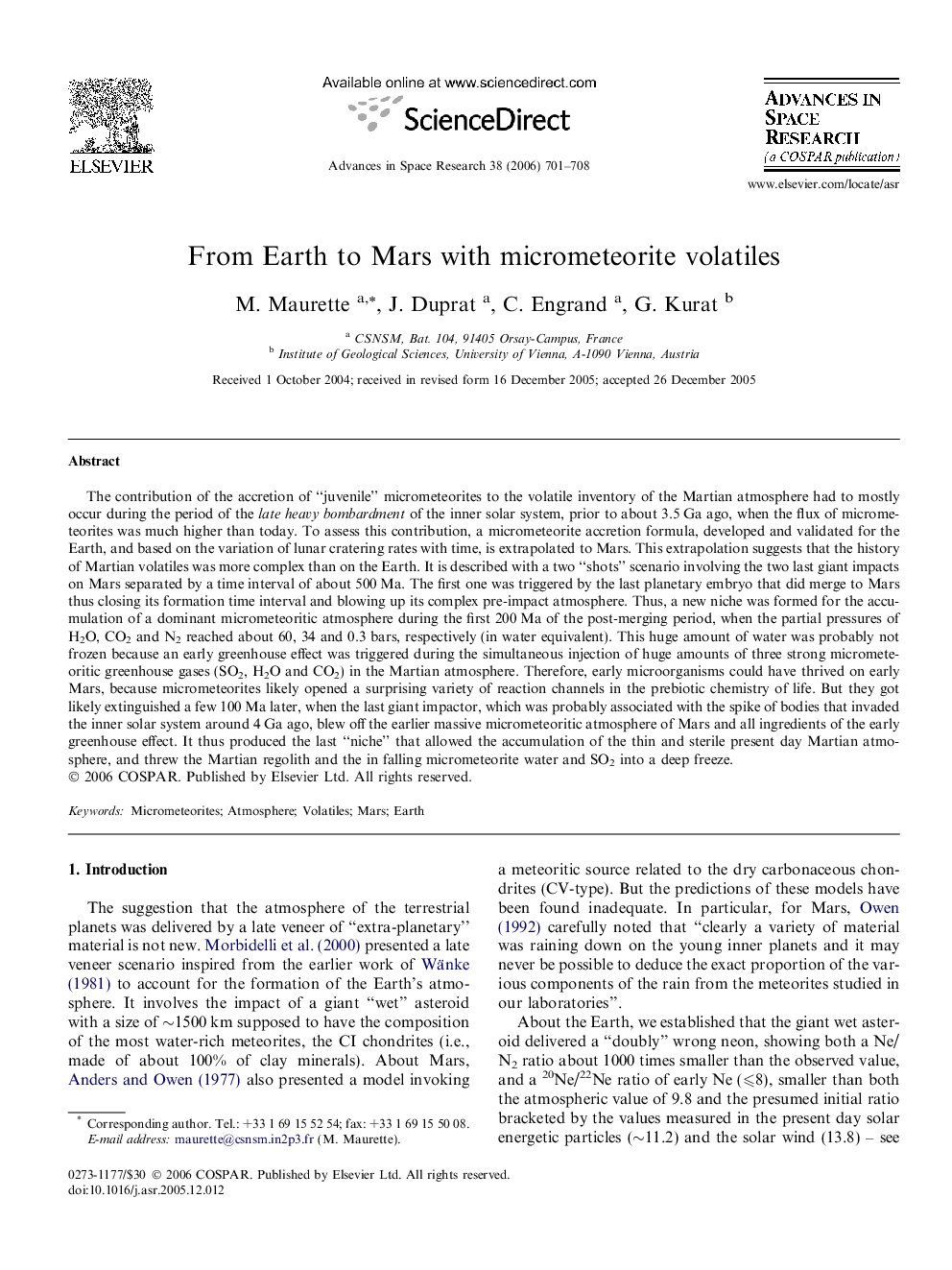| کد مقاله | کد نشریه | سال انتشار | مقاله انگلیسی | نسخه تمام متن |
|---|---|---|---|---|
| 1766956 | 1020171 | 2006 | 8 صفحه PDF | دانلود رایگان |
عنوان انگلیسی مقاله ISI
From Earth to Mars with micrometeorite volatiles
دانلود مقاله + سفارش ترجمه
دانلود مقاله ISI انگلیسی
رایگان برای ایرانیان
کلمات کلیدی
موضوعات مرتبط
مهندسی و علوم پایه
علوم زمین و سیارات
علوم فضا و نجوم
پیش نمایش صفحه اول مقاله

چکیده انگلیسی
The contribution of the accretion of “juvenile” micrometeorites to the volatile inventory of the Martian atmosphere had to mostly occur during the period of the late heavy bombardment of the inner solar system, prior to about 3.5Â Ga ago, when the flux of micrometeorites was much higher than today. To assess this contribution, a micrometeorite accretion formula, developed and validated for the Earth, and based on the variation of lunar cratering rates with time, is extrapolated to Mars. This extrapolation suggests that the history of Martian volatiles was more complex than on the Earth. It is described with a two “shots” scenario involving the two last giant impacts on Mars separated by a time interval of about 500Â Ma. The first one was triggered by the last planetary embryo that did merge to Mars thus closing its formation time interval and blowing up its complex pre-impact atmosphere. Thus, a new niche was formed for the accumulation of a dominant micrometeoritic atmosphere during the first 200Â Ma of the post-merging period, when the partial pressures of H2O, CO2 and N2 reached about 60, 34 and 0.3 bars, respectively (in water equivalent). This huge amount of water was probably not frozen because an early greenhouse effect was triggered during the simultaneous injection of huge amounts of three strong micrometeoritic greenhouse gases (SO2, H2O and CO2) in the Martian atmosphere. Therefore, early microorganisms could have thrived on early Mars, because micrometeorites likely opened a surprising variety of reaction channels in the prebiotic chemistry of life. But they got likely extinguished a few 100Â Ma later, when the last giant impactor, which was probably associated with the spike of bodies that invaded the inner solar system around 4Â Ga ago, blew off the earlier massive micrometeoritic atmosphere of Mars and all ingredients of the early greenhouse effect. It thus produced the last “niche” that allowed the accumulation of the thin and sterile present day Martian atmosphere, and threw the Martian regolith and the in falling micrometeorite water and SO2 into a deep freeze.
ناشر
Database: Elsevier - ScienceDirect (ساینس دایرکت)
Journal: Advances in Space Research - Volume 38, Issue 4, 2006, Pages 701-708
Journal: Advances in Space Research - Volume 38, Issue 4, 2006, Pages 701-708
نویسندگان
M. Maurette, J. Duprat, C. Engrand, G. Kurat,